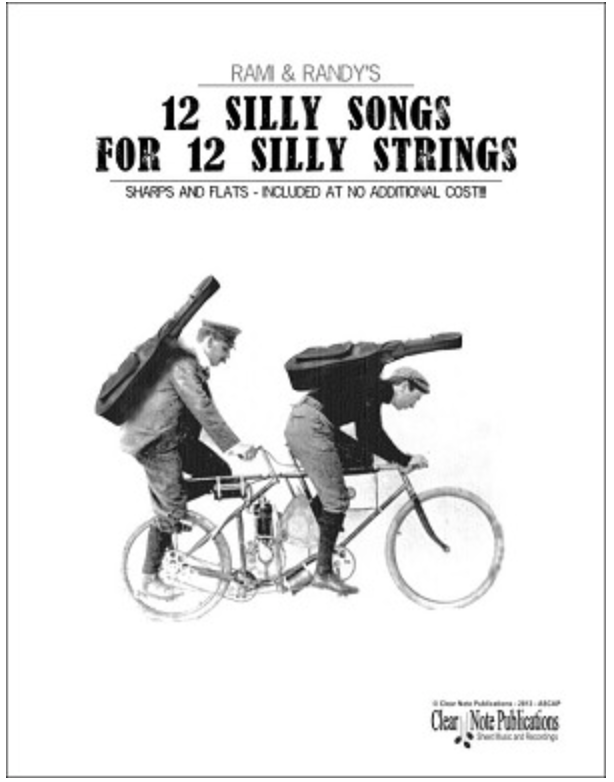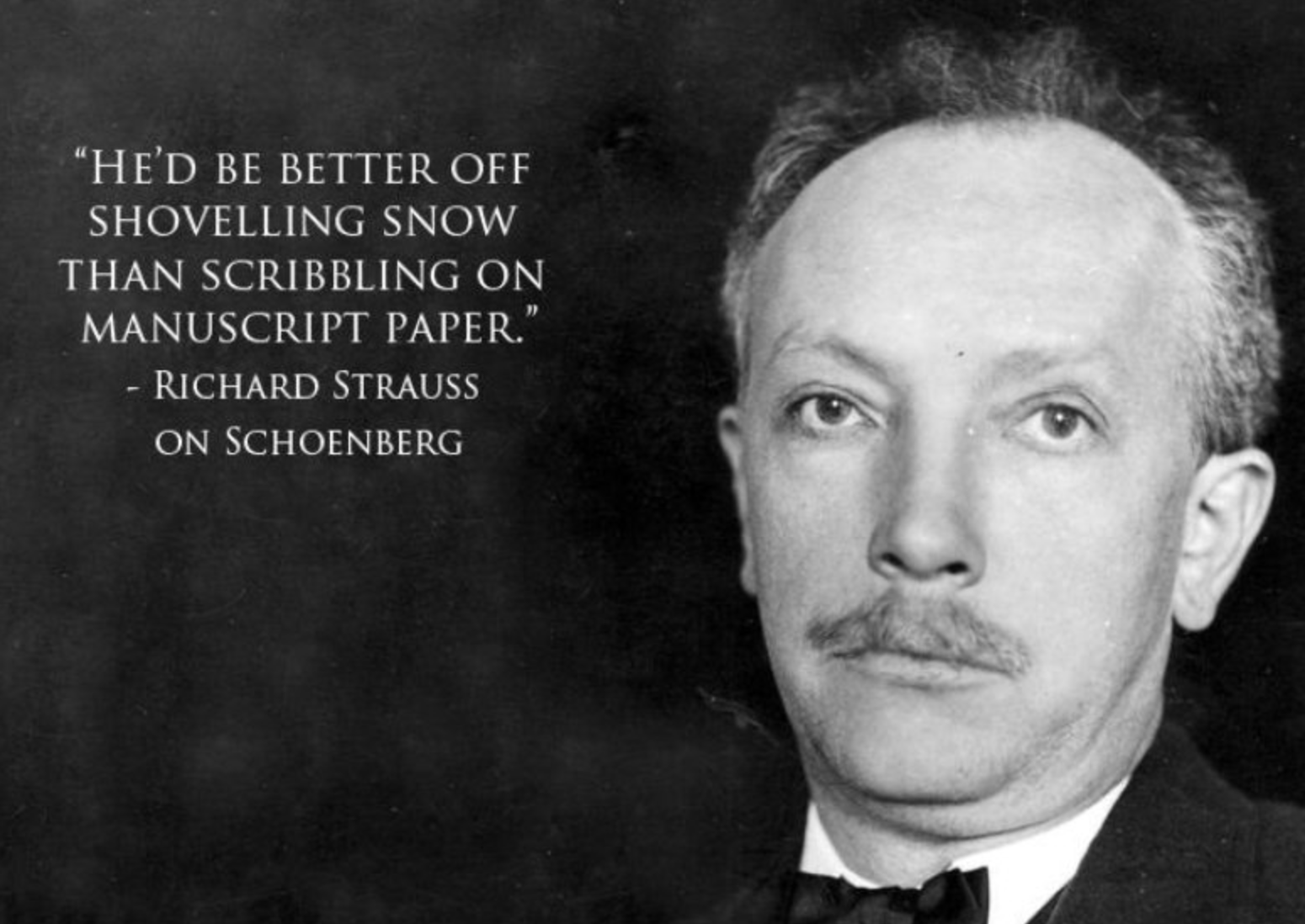The London Symphony Orchestra has launched a Flash website which allows you to get inside the orchestra with multiple viewpoints of the different sections playing Ravel’s Bolero.
There are up to four different views of the orchestra at the same time, and a live chart showing which sections of the orchestra are playing.
This is a great performance with Valery Gergiev conducting and a fascinating insight into orchestration and orchestral playing.
The music will be updated from time to time and it’s completely free! Definitely worth a play!
12 SILLY SONGS FOR 12 SILLY STRINGS
Featuring numbers with titles like “A light dry table wine”, “Gooseflesh”, “Bed and Desk”, and together with the overall title of the collection, you would be right in assuming that the pieces are lighthearterd duets, possibly inspired by student days together.
Twelve Silly Songs For Twelve Silly Strings is a collection of up-tempo, light-hearted jazz/swing tunes written by Randall Avers and Rami Vamos.
“lively, infectious… a good-time vibe”
FANFARE: Robert Schulslaper
“fun, clever and novel pieces–we love to play them!”
Laura Oltmann & Michael Newman
“irresistible and delightful duets”
Stephen Aron, Oberlin Conservatory and Akron University
“laugh-out-loud funny…. This collection is a treasure”
Matthew Hinsley, President of Austin Classical Guitar Society
“Silly Songs is guitar music which has the rare quality of sounding wonderfully familiar,whimsical and totally unique simultaneously”
Ben Verdery, Yale School of Music
Here is Bed and Desk
and Cricket from the collection, which shows the essentially off beat humour and lightly worn musicality inherent in these pieces.
Inventing the American Guitar
The full title, Inventing the American Guitar—The Pre-Civil War Innovations of C.F. Martin and His Contemporaries shows the editor, Peter Szego’s intentions, and also the book’s origins in the first Early Martin Guitar Conference in 2008.
C.F. Martin was born in 1796 in Markneukirchen, Germany and came from a long line of cabinet makers and woodworkers. His father, Johann Georg Martin, also built guitars. By the age of 15, C.F. Martin was supposedly apprenticed to Johann Georg Stauffer, a well-known guitar maker in Vienna, although this claim has never been corroborated by Viennese primary sources. (The identity of Stauffer’s five apprentices in 1811 is documented and Martin was not among them.)
Martin returned to his hometown after completing training and opened his own guitar-making shop.
At that time European craftsmen operated under the guild system. The guitar (in its modern form) was a relatively new instrument, and most guitar makers were members of the Cabinet Makers’ Guild. The Violin Makers’ Guild claimed exclusive rights to manufacture musical instruments. To prevent cabinet makers from producing guitars, The Violin Makers’ Guild filed appeals on three occasions. Johann Martin is mentioned in a surviving submission dated 1832.
Although the cabinet makers successfully defended their right to build guitars, C.F. Martin decided that the guild system was too restrictive and moved to New York City In 1833 . By 1838 he moved his business to Nazareth, PA.
The rest is history!
I came across an early C.F.Martin guitar in St.Ives in Cornwall – it was in a shop full of tourist knick knacks and curiosities, and it was hanging on the wall. It was old, with a bone or ivory bridge, and imagine my surprise on further inspection that it turned out to be similar to an 1840’s Spanish Style Guitar, with C.F.Martin, New York, on the inside. The price was too high for me (also a bit of a shock at the time!), but I am saving up…
Guitar in Space
Chris Hadfield is an astronaut who also plays guitar and sings. He is famous for being the first Canadian spacewalker and also for popular science experiments in zero gravity, as well as his guitar playing skills!
During his free time on Expedition 35, Hadfield recorded music for an album, using the Larrivée Parlor guitar previously brought to the ISS (International Space Station).
That’s a really smart way to travel! No problem with airline baggage handlers then!
Ponce’s Secret Weiss – a list

While looking for information on Manuel Maria Ponce (1882-1948), I came across this illuminating article by Peter Kun Frary, Professor of Music at the University of Hawaii, Leeward. It charts the history of Ponce’s Baroque, Classical and Romantic pastiches written for Andres Segovia when he was in France.
Segovia would refer to these pieces as their little joke, and probably found a willing collaborator in Ponce who helped him fill out his concert programmes in a Kreisleresque manner.
One of the earliest pieces was attributed to Sylvius Leopold Weiss who was not very well known generally at the time, but conveniently shared a birth year with J.S.Bach who was Segovia’s first choice.
Apparently the harpsichordist Wanda Landowska heard the first performance and went backstage to say that Segovia’s attribution of the piece to Bach had been rumbled, at which point Segovia and Ponce admitted that it was by Weiss!
The inside story on this issue is available in print, in the words of Andres Segovia himself. See: Miguel Alcázar, (Ed.) The Segovia-Ponce Letters, translated by Peter Segal.
However, also see this discussion on the subject.
The pieces are certainly charming enough, and those which come clean – the Sonata Clasica and Sonata Romantica are substantial works.
Peter Kun Frary lists the following as Ponce’s “secret” compositions:
Balletto (Weiss)
Prelude (Weiss) (also for guitar and harpsichord)
Suite Antigua (A.Scarlatti)
Suite en La Mineur (Weiss)
This article is certainly worth a read and throws light on the different (some pirated) editions of Ponce’s pastiches as well as dates and circumstances of their composition.
“I base my identity on being a composer, who does other things.” Ned Rorem
 Another birthday – it was Ned Rorem’s 90th yesterday..
Another birthday – it was Ned Rorem’s 90th yesterday..
It’s an occasion that would be easy to miss. Apart from some concerts here and there, there has not been a fanfare, or any special mention in the media for this prolific American composer and Pulitzer Prize winner.
He became notorious for his diaries published from the 1950s and he is far better known in certain circles for his literary work than as a composer. As he put it to the Paris Review in 1999, his early diaries were “filled with drunkenness, sex, and the talk of my betters.”
In an interview with WYNC’s Sarah Fishko in 2002 he reminisces about his teacher who introduced him to the music of Debussy, Stravinsky and Ravel, and also pointedly adds
“I never go to classical concerts any more and I don’t know anyone who does. It’s hard still to care whether some virtuoso tonight will perform [Beethoven‘s] Moonlight Sonata a bit better or a bit worse than another virtuoso performed it last night.”
Here is the full article celebrating his achievements by ANASTASIA TSIOULCAS of NPR Classical.
More Yamandu
What more is there to say?
Musicians win the right to carry instruments on planes (EU proposal – again!)
 Perhaps this is a little premature, but we can hope!
Perhaps this is a little premature, but we can hope!
This is actually old news from March 2013 and it says that the new EU proposals will come in “next year”
Thanks to Gaelle Solal for keeping this going!
Since the policy in the US changed in February 2012, musicians and organisations have campaigned for similar changes in the UK. The proposed changes will allow musicians carry small instruments in the cabin with them, and require airlines to make their baggage restrictions clear at the point of booking as well as at the airport.
Johannes Moller in Mumbai
 The Night Flame by Johannes Möller performed by Johannes Möller, guitar and Arif Khan, tabla. Live from BlueFROG Mumbai 15 September 2013.
The Night Flame by Johannes Möller performed by Johannes Möller, guitar and Arif Khan, tabla. Live from BlueFROG Mumbai 15 September 2013.
Article in Platform





